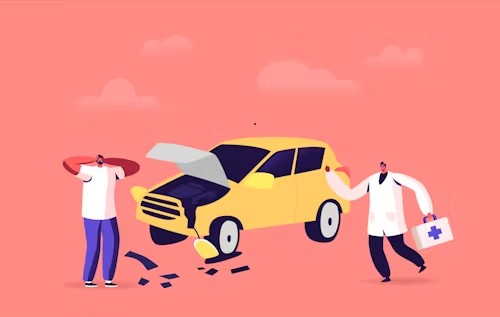Introduction: Your Car Speaks Volumes About You
Did you know your car’s color alone could influence your insurance rates? From your vehicle’s make and model to your parking habits and daily commute, insurers analyze dozens of factors to calculate your risk level—and ultimately, your premium. In this eye-opening guide, we’ll decode how insurance companies assess your profile and, more importantly, how you can use this knowledge to save money while staying fully protected.
1. How Insurers Calculate Your Risk

Insurance companies don’t guess—they analyze. Here are the 5 key factors that determine your premium:
A. Vehicle Make and Year
Newer and high-performance cars cost more to insure because:
- Higher theft rates (e.g., Ford F-150 and Honda Civic top stolen vehicle lists in the US)
- Pricier repairs (luxury brands like BMW average 2x repair costs vs. Toyota)
📌 Real-World Example:
| Vehicle | Average Annual Premium |
|---|---|
| 2015 Honda Civic | $1,200 |
| 2023 Tesla Model 3 | $2,800 |
| 2021 Porsche 911 | $4,500 |
B. Location Matters More Than You Think
- Urban areas (e.g., Detroit, Miami) = Higher rates due to theft/crash statistics
- Parking: Garage-stored vehicles see 15-20% lower premiums vs. street parking
C. Driver Demographics
- Age: Teens (16-19) pay 82% more than 40-year-olds (NHTSA data)
- Claims history: Just one at-fault accident can increase rates by 31% (Forbes)
D. Usage Patterns
- Commuting 20+ miles daily? Expect to pay 10-15% more than pleasure use
- Rideshare drivers require special commercial policies
E. Modifications & Safety Features
- Discount-worthy: Anti-theft devices (-15%), dashcams (-10%)
- Cost-raisers: Performance mods (turbo kits +25%), lift kits (+30%)
2. Are You Overpaying? How to Check

A. Comparison Shopping 101
- Use tools like The Zebra or Gabi for instant quotes
- Pro tip: Insurers favor new customers—switch every 2-3 years for best rates
B. Right-Size Your Coverage
✅ Smart Adjustments:
- Increase deductible from 500→500→1,000 (saves ~18%)
- Drop collision on cars worth <$3,000
- Bundle home+auto policies (avg. 25% discount)
❌ Common Over-Coverage:
- Rental car reimbursement when you own multiple vehicles
- Roadside assistance if you already have AAA
3. Debunking 4 Persistent Myths

🚫 Myth: “Red cars cost more to insure”
✅ Truth: Color doesn’t matter—but a red Ferrari does (because it’s expensive to repair)
🚫 Myth: “Older drivers always pay less”
✅ Truth: Rates spike again after age 75 due to higher accident risk
🚫 Myth: “Full coverage means everything’s included”
✅ Truth: It typically just means collision + comprehensive—still excludes gaps like mechanical failures
4. Proven Ways to Improve Your Risk Profile

A. Tech That Lowers Premiums
- Usage-based insurance (UBI): Progressive Snapshot can save safe drivers 30%
- Telematics devices: Allstate Drivewise tracks braking/hard turns
B. Strategic Behavior Changes
- Take a defensive driving course (5-15% discount)
- Maintain continuous coverage (lapses trigger rate hikes)
C. Payment Hacks
- Pay annually instead of monthly (avoid 3-5% installment fees)
- Ask about low-mileage discounts if you drive <7,500 miles/year
5. 7 Must-Ask Questions Before Buying

- “What’s my actual cash value vs. replacement cost?”
- “Are aftermarket parts allowed for repairs?”
- “How does accident forgiveness work?”
- “What’s excluded under ‘acts of God’?”
Conclusion: Knowledge = Savings
Your car might be telling insurers you’re high-risk—but now you know how to rewrite the story. Implement just 2-3 strategies from this guide (like installing a tracker or raising your deductible) and you could save hundreds annually.
